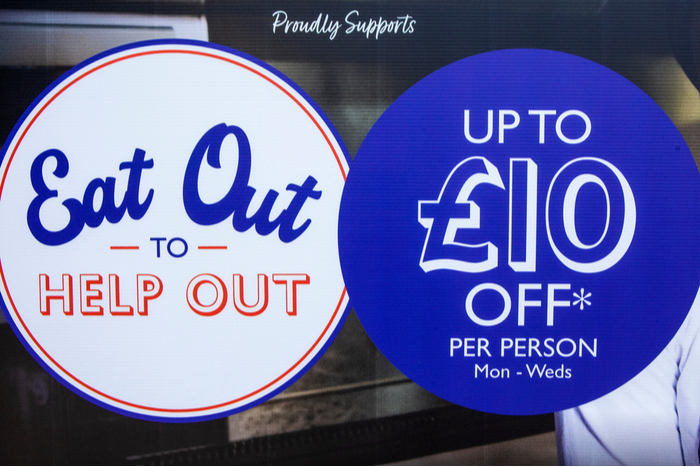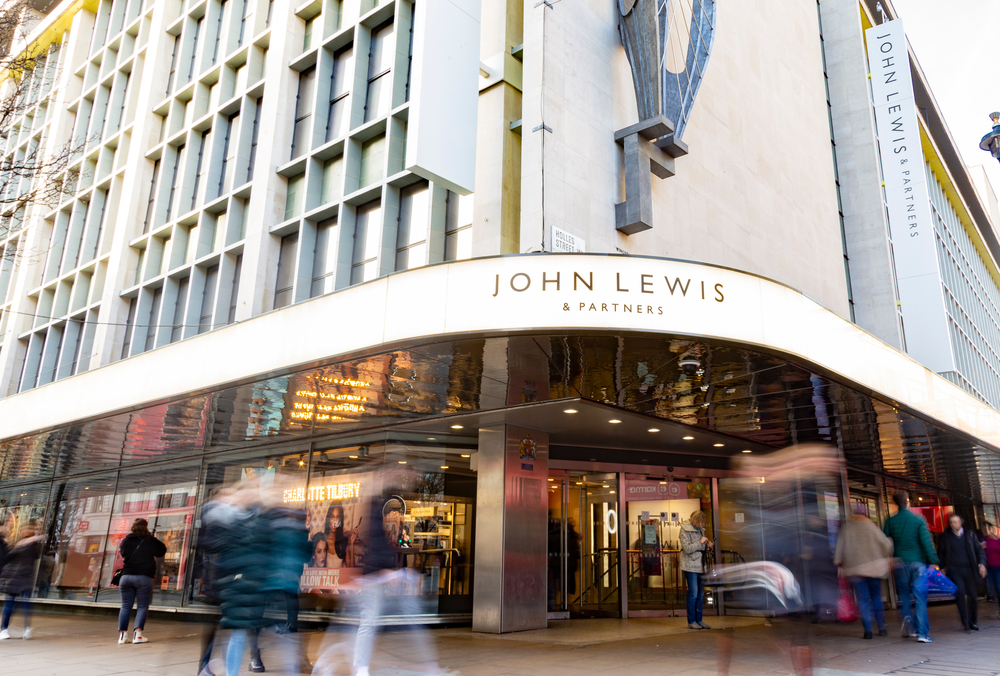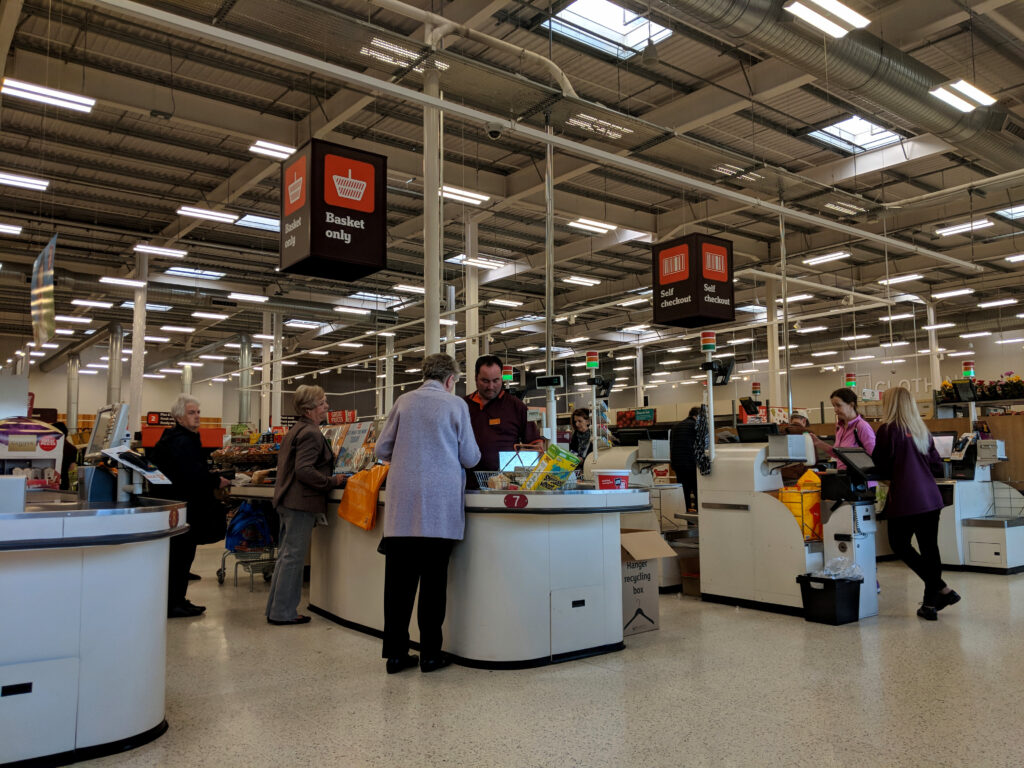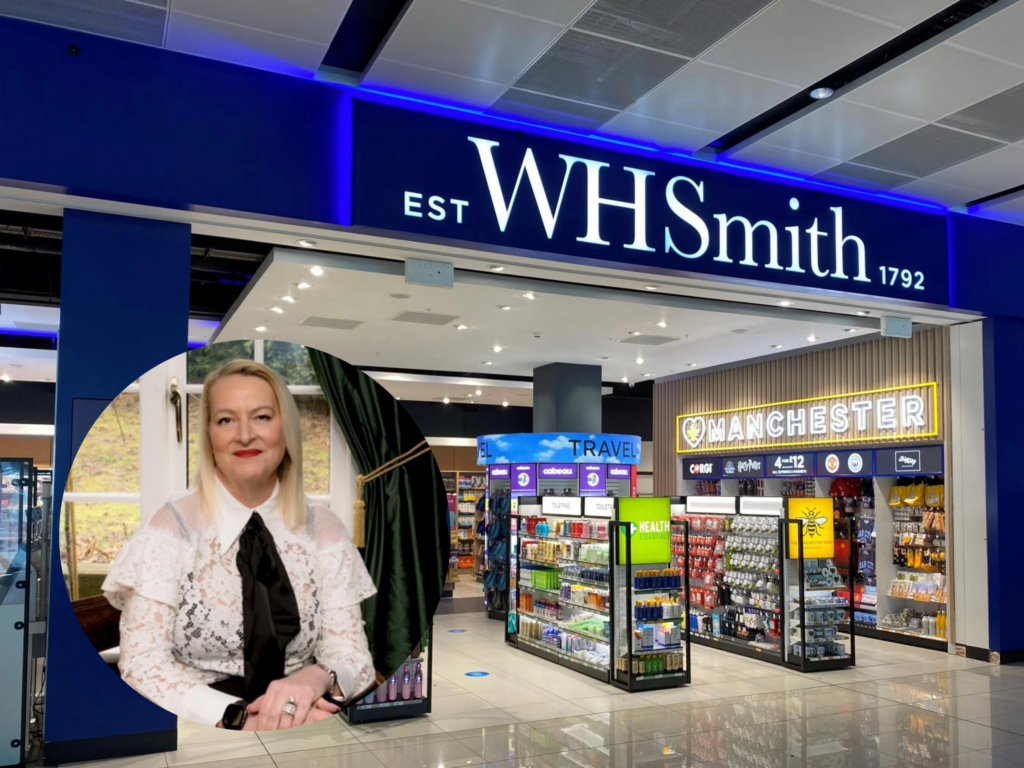To many consumers’ and businesses’ dismay, the UK Government’s Eat Out to Help Out Scheme came to an end on August 31.
Since the Covid-19 pandemic gripped the country in March, the government has attempted to save the economy by introducing the Coronavirus Job Retention Scheme, implementing mandatory social distancing and face coverings in public indoor spaces, introducing a VAT cut on food, accommodation and attractions, and the discount for eating out.
Eat Out to Help Out meant UK consumers could eat in at registered restaurants and receive a 50 per cent discount on food or non-alcoholic drinks, up to a maximum of £10 discount per diner. It only applied on Mondays, Tuesdays and Wednesdays from August 3 to 31. Participating establishments included restaurants, cafés, bars or pubs, work and school canteens, as well as food halls.

The Eat Out to Help Out initiative saw more than 64 million discounted meals claimed in its first three weeks, helping to support 1.8 million jobs in the hospitality sector. However, the scheme is estimated to have cost the taxpayer £400 million while encouraging millions to venture out post-lockdown.
When pubs reopened in July, it failed to revive footfall levels for retail. According to the BRC-ShopperTrak Footfall Monitor, although footfall dropped by 42.1 per cent in the four weeks ending August 1, it was an improvement from the drop of 62.6 per cent in June – the month non-essential retailers were allowed to exit lockdown.
While the year-on-year declines for both months suggested that retail footfall was still far from healthy, Eat Out to Help Out gave the sector a glimmer of hope – especially as the UK officially fell into recession.

In fact, weekly data from Springboard found that footfall increased by six per cent last week compared to the previous seven days, as retailers benefited from the last full week of the Eat Out to Help Out scheme. Springboard’s weekly footfall data also saw a significant upwards trajectory throughout August, suggesting improving consumer confidence since the three-month lockdown for non-essential retail ended on June 15.
“The last full week of the Eat Out to Help Out scheme led to the most positive footfall result of any week so far with increases in all three destination types from the week before, and year on year declines that were the most modest since the start of the lockdown,” Springboard insights director Diane Wehrle said.
“Not only did the week as a whole yield far more positive results those previously but, given the situation we find ourselves in and the much cooler weather this year, the bank holiday weekend proved to be a remarkable success for retail destinations.”
“There might be a hybrid scheme ‘Shop Out to Eat Out to Help Out’ to incentivise Brits to visit shops”
Henley Business School professor Adrian Palmer said the government’s objective was to use Eat Out to Help Out as “a means to an end, and the end was to stimulate the broader economy, not just the restaurant sector”.
“Could there be other more effective ways of achieving this end? Subsidised incentives to travel by train? Subsidised theatre tickets?” Palmer told Retail Gazette.
“If the objective is to bring life back to town centres, maybe the government should consider a short-term scheme to give subsidised lunch vouchers to workers returning to their offices.
“The government isn’t running a business to make private profit, but to induce wider spending and confidence building. It is against these benchmarks that intervention must be judged.
“Happy hours, off-peak pricing and special opening offers are among tools that have been used by restaurants for a long time to keep their proposition nimble and relevant in changing market conditions.
“Creative propositions may allow restaurants and retailers to help each other out, for example retailers could offer vouchers for a meal at a nearby restaurant, making a visit to a shopping centre a more attractive proposition and helping to utilise the capacity of both retailers and restaurants.”
Given that over 60 million meals were served via the scheme, retail expert and Nottingham Business School research associate Nelson Blackley said it has “hopefully demonstrated to millions of people that, with adequate hygiene and social distancing precautions in place, eating out again can be both a safe and enjoyable experience”.
“Irrespective of whether the scheme generated incremental sales overall during August, this alone was an extremely important impact of this initiative,” Blackley said.
“Its success should therefore encourage the Chancellor to consider some further selective and imaginative follow-on interventions.”
He added: “There is no doubt help is needed since data from Springboard shows that the recovery of high streets is being ‘hampered by far lower levels of activity in large cities which account for the greatest volumes’ – meaning footfall is still 34.9 percent lower than last year.”

Blackley also said there were “several areas which the Treasury could realistically look to do this in a way which could not only be operationally viable but bring benefits to a wide range of shoppers”.
“The introduction of subsidised car parking – the cost of car parking is always mentioned in shopper surveys as a barrier to visiting town and city centres,” he said.
“The Treasury could fund local authorities to make car parking free on specific days or at specific times to help shoppers.
“Subsidised public transport – again this already exists for specific groups (e.g. pensioners) and so could be extended to all -but again perhaps on specific days or times to not only encourage more people to use public transport again but to help them to travel to and from their towns and city centres.
“Retailers need to make it as easy as possible for customers to return”
“Finally, there might be a hybrid scheme ‘Shop Out to Eat Out to Help Out’ to incentivise shoppers to visit shops and spend money but then also linked to something similar to last month’s Eat out Help Out initiative in local restaurants.
“Some major retailers such as Primark might be very interested in being involved as major sponsors of this initiative and covering some of the cost of this to the Treasury.
“The scheme might therefore involve both participating retail stores as well as cafes and restaurants.”
According to Will Hanmer-Lloyd, behavioural planning director at Total Media, “retailers need to make it as easy as possible for customers to return”. This could be done by communicating increasing shopper numbers, displaying images of shoppers in stores on social media or contacting customers directly to reassure them that fellow customers are back in store. Hanmer-Lloyd added that retailers would need to consider “working together on a local level to create a hub that shows what shops on the high street are open and when, so that customers know they will have a seamless experience”.
“Another tactic retailers should consider is adding functionality to existing websites that show customers when a store is and isn’t busy in any given area, as this will reassure anxious customers,” he told Retail Gazette.
“Scaling this, retailers could work together to create a website that captures how busy high streets are and when, so people have the option to shop at less busy times.
“Eat Out To Help Out was a brilliant way to show UK customers that it was okay to be back out on the high street.
“Now that it is over, retailers can take the lessons learnt from the scheme and continue to establish being out and about – whether eating out or shopping – as an accepted social norm.”
As the Eat Out to Help Out scheme has come to an end, retailers must realise that now more than ever is the time to connect with customers in new and inventive ways. To address the needs of those cautious consumers less confident about browsing in-store during the pandemic, retailers may need to provide alternative shopping options that can improve the customer experience.
Click here to sign up to Retail Gazette’s free daily email newsletter

















